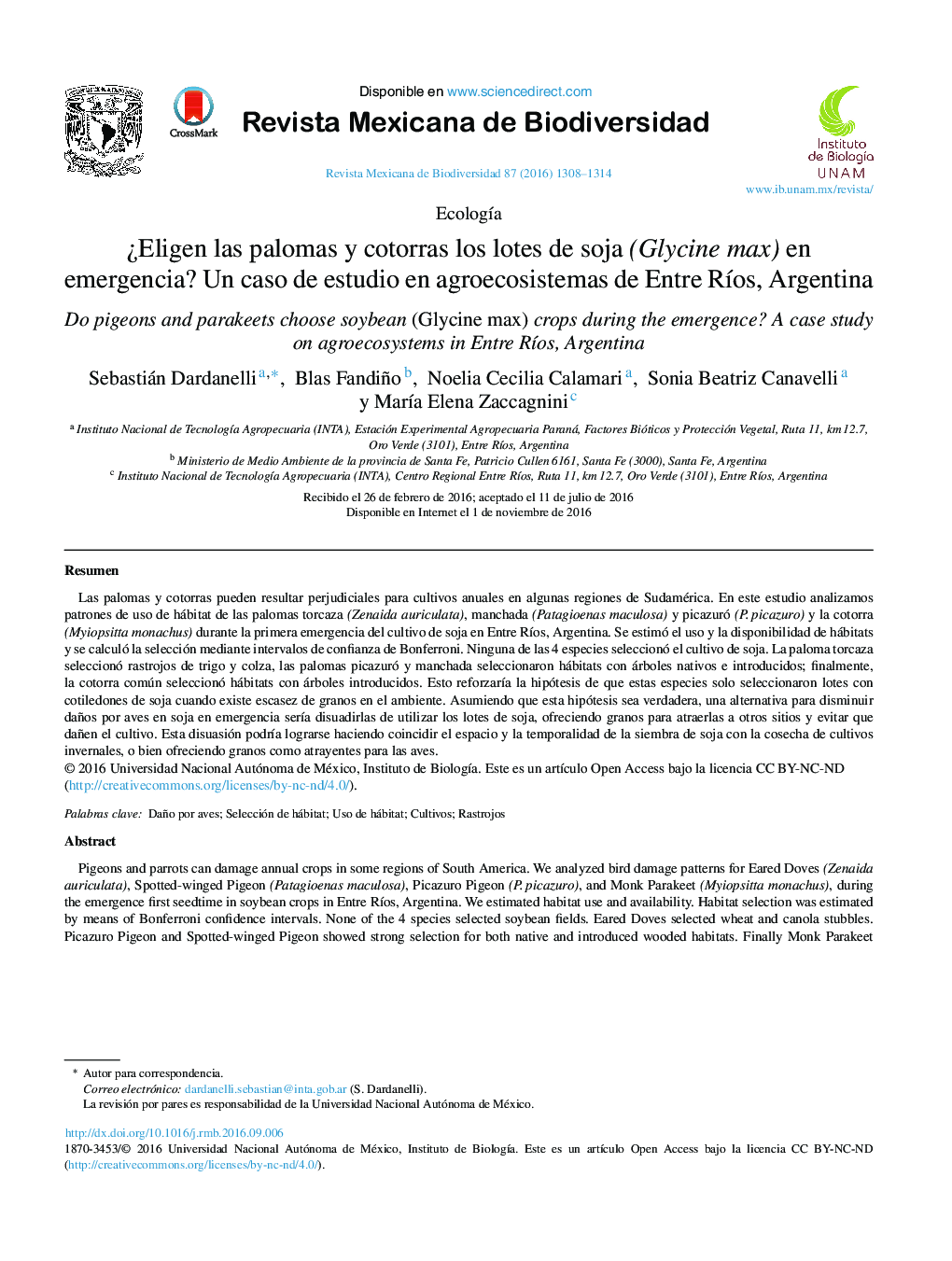| Article ID | Journal | Published Year | Pages | File Type |
|---|---|---|---|---|
| 8867134 | Revista Mexicana de Biodiversidad | 2016 | 7 Pages |
Abstract
Pigeons and parrots can damage annual crops in some regions of South America. We analyzed bird damage patterns for Eared Doves (Zenaida auriculata), Spotted-winged Pigeon (Patagioenas maculosa), Picazuro Pigeon (P. picazuro), and Monk Parakeet (Myiopsitta monachus), during the emergence first seedtime in soybean crops in Entre RÃos, Argentina. We estimated habitat use and availability. Habitat selection was estimated by means of Bonferroni confidence intervals. None of the 4 species selected soybean fields. Eared Doves selected wheat and canola stubbles. Picazuro Pigeon and Spotted-winged Pigeon showed strong selection for both native and introduced wooded habitats. Finally Monk Parakeet selected habitats with introduced trees. These results reinforce the idea that these species only selected fields with soybean cotyledons when there is a shortage of grain in the environment. An alternative to reduce bird damage in soybean crops first seedtime could be to offer grains in alternative places to attract them away from the soybean fields. Deterrence could be achieved by coordinating spatio-temporality soybean planting with harvest of winter grain crops, or by offering grains attractive to birds.
Related Topics
Life Sciences
Agricultural and Biological Sciences
Animal Science and Zoology
Authors
Sebastián Dardanelli, Blas Fandiño, Noelia Cecilia Calamari, Sonia Beatriz Canavelli, MarÃa Elena Zaccagnini,
